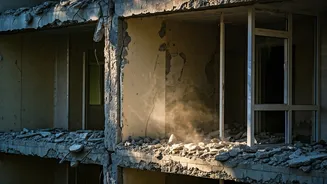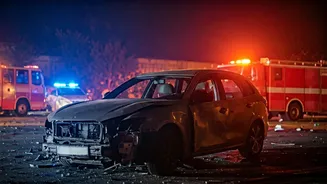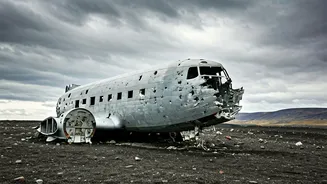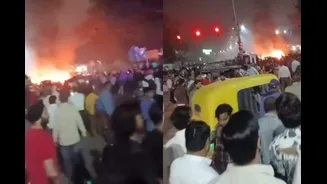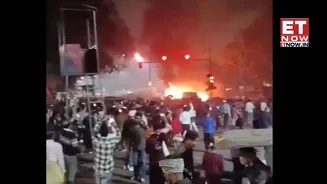Immediate Actions: Take Shelter
When a blast occurs, the most crucial initial response is to find immediate shelter. The instinct to flee should be overridden by the need to protect yourself
from the primary effects of the explosion. If you're indoors, quickly seek a sturdy structure like a table or desk, and get under it. Cover your head and neck to shield from falling debris. If you are outdoors, try to find any available shelter, such as a sturdy building or a recessed area. Shield yourself with anything that can offer protection, like a wall or a ditch. Keep away from windows and glass structures as they are highly susceptible to shattering, and can cause severe injuries. Once you have found shelter, try to remain calm while assessing the immediate surroundings to identify potential threats and hazards.
The Drop and Cover Maneuver
The 'drop and cover' technique is a simple but essential action during a blast. Immediately after the explosion, drop to the ground. This minimizes your exposure to flying debris and the pressure wave of the blast. Cover your head and neck with your arms and hands to provide an additional layer of protection. This posture helps shield vital organs from potential injuries, such as head trauma and lacerations. This action is most effective when combined with seeking sturdy shelter. The aim is to create a physical barrier around yourself, reducing the likelihood of direct impact from objects and the intensity of the blast. By practicing this response, you increase your chances of survival when a blast occurs.
Protecting Your Airways
Protecting your respiratory system is vital during and after a blast. Explosions can generate dust, debris, and potentially harmful gases, which can severely damage your lungs. If possible, cover your mouth and nose with a cloth, a shirt, or any available material to act as a filter. This makeshift mask will help to reduce your inhalation of harmful airborne particles. If you have access to a respirator or a more advanced breathing apparatus, use it. Try to stay in a well-ventilated area, and avoid inhaling smoke or dust as much as possible. Proper airway protection is critical for avoiding respiratory illnesses and ensuring the continued ability to breathe freely.
Preparedness is Key
Being prepared before any potential blast is extremely important. Awareness of possible threats and areas with higher risks will allow you to assess the situation properly. Keeping a first-aid kit readily available, along with essential supplies like water, non-perishable food, and a flashlight, will be extremely helpful. It's crucial to have a plan that outlines safe routes, emergency contact information, and meeting points if you are separated from loved ones. Practice these plans regularly, so that everyone knows how to react during a disaster. Staying informed about the local risks and the ways of addressing them are important for your safety and preparedness.
Secondary Blast Alert
After an initial explosion, it is essential to be aware of the possibility of a secondary blast. Terrorists or other perpetrators sometimes plant additional explosives intended to target first responders or individuals who are helping the injured. It is extremely important to remain calm but very cautious and stay away from areas with potential secondary devices. If you suspect the threat of a secondary explosion, evacuate and move to a safer location, such as a distance from the blast site. Be vigilant and observant of suspicious objects and avoid touching anything you are not sure about. Listen to authorities, and stay informed on the safety instructions issued for the region to ensure your safety.


